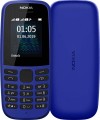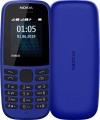The type of SIM card used in the mobile phone. The term SIM here means all types of cards for identification in mobile networks, including 3G networks,
CDMA, etc. (although formally such cards may have other names). The type of such a card is primarily described by its form factor. Here are the most common options:
— micro SIM. The largest type of sim cards widely used in modern devices: its' size is 15x12 mm. It was introduced back in 2010, nowadays it is being replaced by more compact and advanced nano-SIM and eSIM. Keep in mind that a microSIM card can be made by simply cutting a larger mini-SIM to the dimensions mentioned above. However this is associated with a certain risk and requires accuracy, so it is better to contact your mobile carrier to replace the SIM card with a suitable one.
— Nano-SIM. The smallest form factor of classic (replaceable) SIM-cards is 12x9 mm. In such cards the frames are cut off almost to the very chip. This standard appeared back in 2012, but it is still extremely common. Like microSIM, a card for a slot of this format can be made by cutting a larger SIM card, but this requires extreme accuracy and is not recommended.
—
e-SIM. This type of SIM card is an electronic module that is built directly into the device and cannot be replaced. To authorize in the network of a mobile carrier, you need to make the appropriate settings in the eSIM. Those m
...odules are able to save several sets of settings at once, which makes it easy to switch between different carriers — no need to bother with the physical replacement of the SIM card, just change the profile in the settings. Another advantage of such modules is compactness. However, before buying a phone with an eSIM, you should clarify whether this technology is supported by your mobile carrier — even nowadays, not every network is compatible with such modules.
— nano+eSIM. An option found in smartphones with two SIM cards. The built-in eSIM module in such a device is complemented by a slot for a replaceable nanoSIM card. The features of each of these card types are detailed above. It is convenient to keep the main phone number (s) on eSIM, and use replacement cards for temporary numbers. Such scenario may come in handy if you travel abroad a lot — you can install cards from local carriers in the traditional nanoSIM slot.The quantity and types of removable cards (SIM, memory cards) that can be installed in the phone. On E-Catalog this parameter is specified only for devices that allow the installation of more than one SIM card — most often that means
2 SIM cards, however, you can find devices with
three or even four corresponding slots.
Initially several slots mean that several phone numbers can be used on one device. Thus it is possible to combine personal and work numbers, separate plans for calls and the Internet, etc. in one device. However modern devices (especially smartphones) often provide the combined design
“SIM + SIM / memory card " : one of the slots is intended only for SIM, the second can be used both for a SIM card or for a memory card such as microSD or Nano Memory (see "Memory card slot"). At the same time, there is no separate slot for a memory card in the device, so the user has to choose between the second number and additional storage. Therefore, if you want to use 2 SIM cards and a memory card at the same time, you should pay attention to models where this
is directly stated.
It is also worth considering that individual slots may differ in the type of compatible SIM cards; see below for details.

